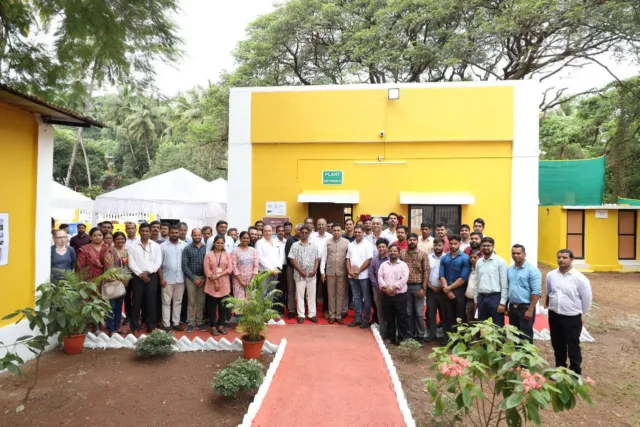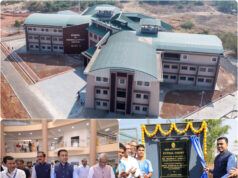Chief Minister Dr Pramod Sawant inaugurated India’s first “Automated Vacuum Sewer Network Project” at Mala, Panaji, under the Atal Mission for Rejuvenation and Urban Transformation (AMRUT).
The project involves providing, installing, and commissioning a vacuum sewer network with house connections for low-lying areas in Panaji.
This innovative solution will address challenges in high water table areas like Mala and St. Inez, improving the city’s infrastructure.


The Government of Goa is dedicated to enhancing infrastructure for the ease of living for the residents of Panaji and the State, stated the Chief Minister in his post on X.
According to a press release by Imagine Panaji Smart City Development Ltd (IPSCDL), the Rs. 8.52 crore project is designed to improve sewage infrastructure for previously underserved regions like Mala and the St. Inez Creek. The system is now operational and includes a 5-year maintenance plan to ensure its long-term efficiency.
As one of India’s top tourist destinations, Panaji experiences a heavy influx of domestic and international visitors, placing significant pressure on the city’s sanitation infrastructure. For years, low-lying areas in Mala and along St. Inez creek suffered from inadequate sewage connections due to their high water table and densely populated settlements.
The newly commissioned vacuum sewer system offers an innovative and sustainable solution to this problem. It provides a reliable alternative to traditional gravity sewers, which were unsuitable for unique geographic conditions in these areas . The system, designed and installed by Nashville Infra Services Limited (formerly Supama Infra Services Limited), follows their previous success with India’s first vacuum sewer system in Durbhat, Ponda, in 2017.
This project is a significant technological milestone in India’s urban waste water management. Unlike the manual systems deployed previously, the Panaji vacuum sewer network is fully automated, ensuring minimal human intervention and higher operational efficiency.
Key Features:
- 112 houses connected .
- 25 collection chambers and 34 interface valves.
- A 2.5 km vacuum network with 4 vacuum pumps and 2 discharge pumps.
- A 6 cubic meter vacuum tank ensuring efficient waste collection.
The vacuum system is particularly effective in areas with high water tables, narrow lanes and densely populated neighbourhoods. Its sealed design prevents storm water from infiltrating the sewer system, reducing the risk of environmental contamination and infiltration from groundwater, an issue that often plagues traditional sewer systems.
The benefits of this cutting-edge system extend far beyond environmental protection. Residents who previously dealt with sewage overflows during monsoons and high tides now have access to a stable and reliable system. Many households previously dependent on septic tanks, which frequently overflowed, are now connected to the centralized network, greatly improving sanitation and public health.
By preventing untreated sewage from entering the Mandovi River and its tributaries, including the Rua de Ourem and St. Inez Creek, the vacuum sewer network has a direct positive impact on reducing water pollution in Panaji. This initiative is in line with the broader goals of the AMRUT and Smart Cities Mission, positioning Panaji as a model for sustainable urban development in India.
This ground-breaking project sets a precedent for other Indian cities facing similar geographical and infrastructural challenges, demonstrating the potential of innovative public-private partnerships to deliver transformative urban solutions.






